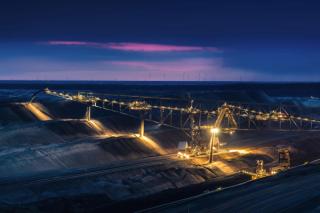
Cultural heritage: Indigenous and cultural heritage values driving sustainable development
by Flavia Kiperman
View post

Jenny Hazzard, Head of Environmental Planning at ITPEnergised (part of SLR) takes a closer look at the lengthening timescales for EIA Screening Opinions for Battery Energy Storage Systems (BESS) projects in Scotland and offers some advice to developers at the crucial early stages.
Proposals for electricity generation projects exceeding 50 MW capacity in Scotland are subject to consenting under Section 36 of the Electricity Act 1989. Applications are determined by the Scottish Ministers, administered by the Energy Consents Unit (ECU).
The requirement, or otherwise, for an Environmental Impact Assessment (EIA) to accompany any application for consent is determined by the ECU, in accordance with the Electricity Works (Environmental Impact Assessment) (Scotland) Regulations 2017 (‘the EIA Regulations’). The need for a full, statutory EIA depends on the scale and nature of the development, the receiving environment, and the potential for the development to result in significant environmental effects. Applicants can formally request an EIA Screening Opinion from the ECU, who will in turn consult the relevant Local Planning Authority (LPA) and other consultees. The EIA Regulations indicate that the ECU should provide a Screening Opinion within 90 days, or three weeks from receiving feedback from the LPA, unless otherwise agreed.
Until relatively recently, the frequency of developers requesting formal EIA Screening Opinions for Section 36 scale projects (i.e. generation projects >50MW capacity) was fairly uncommon. A wind farm with over 50MW capacity is essentially always going to be considered as having potential to result in significant environmental effects, so typically developers would recognise that an EIA is required and progress straight to the EIA Scoping stage, without going through Screening.
However, as the rate of development of large-scale Battery Energy Storage Systems (BESS) has increased, this has changed. A 50MW, or even a 200MW+ BESS project may or may not have the potential to result in significant environmental effects, depending on the site location, environmental sensitivities etc. It is therefore quite standard for applicants to seek a formal EIA Screening Opinion from the ECU for BESS projects (similarly for solar PV or hybrid projects, more often than wind).
We have compiled some data, principally from the ECU website, on typical timescales applicants are experiencing for receiving EIA Screening Opinions, focusing on proposed BESS projects. For some additional context, we have also reviewed timescales for receiving EIA Scoping responses for recent wind projects on which we have led/are leading the EIA process.
Some trends and interesting notes are given below.
BESS projects for which Screening requests were submitted before summer/autumn 2023 appear to typically have had Screening Opinions returned within ~2 to 5 months, with only a few exceptions.
– BESS projects for which Screening requests were submitted in autumn 2023 look to have had Screening Opinions back now (September 2024), with dates of Screening Opinions ranging from February 2024 to June 2024 (typically ~3 to 6 months). One from November 2023 had a 10-month turnaround for receipt of Screening Opinion, but this appears to be an anomaly for requests submitted last year.
– From the start of 2024, the volume of Screening requests for BESS projects has picked up, and the turnaround time for issuing Screening Opinions has dramatically increased. Below is a note of the number of requests submitted each month over the past seven months (based on information from the ECU website):
It appears that the most recent Screening request for which a Screening Opinion has been issued (as of late September 2024) is from mid-February 2024.
For comparison and out of interest, we have received timescales for receipt of EIA Scoping Opinions for onshore wind projects on which we have led the EIA Scoping process (no Screening process was undertaken for these, as all were assumed to require EIA). Essentially all have had Scoping Opinions returned within 2 to 3.5 months.
Therefore, it interestingly appears Scoping Opinions for wind projects are typically being turned around much faster than Screening Opinions for BESS projects. It’s not clear why that is – potentially a case of wind energy development being more established and familiar, versus the still slightly novel elements (for the ECU and local authorities) of BESS projects e.g. their understanding of the fire risk, battery lifetime and associated hazardous wastes arising etc. Local authorities and other consultees may be providing Scoping feedback to the ECU faster and more confidently than they are providing any consultation/Screening feedback for BESS. Or it may be that the internal structure/resourcing within the ECU is resulting in a bigger pinch on Screening/BESS projects. Likely, it is a combination of these and other factors.
The headline summary is that the Screening process for Section 36 projects is currently challenging, and much lengthier than anyone would consider ideal. The ECU has itself recently indicated there is a ~80-project backlog they are trying to work through. At that time (late summer 2024) the ECU informally indicated that a ~3-4 month wait time should be expected for provision of a Screening Opinion, but based on the above analysis it is actually tending towards 7 months or more, given that none have been issued for BESS projects with requests any later than February 2024.
SLR is working closely with the ECU on numerous projects and has developed a good working relationship with all the officers we are regularly dealing with. We recognise the resourcing constraints. Applicants and agents can try to help the process by keeping in regular communication, asking questions, ensuring the information provided in Screening requests is clear and comprehensive, checking whether feedback has been received from local authorities and others, etc. However, with the backlog and resourcing constraints as they are, developers need to be realistic in expecting that Screening Opinions for Section 36 projects will continue to be slow in arriving for the foreseeable future.
It may also be worth considering, at the early stages of new BESS and/or solar projects, whether EIA Screening is necessary or wise. If there is a reasonable chance that a project would be ‘screened in’ i.e. an EIA would be required, then it could be a more efficient option to voluntarily undertake a full EIA, and progress straight to EIA Scoping. The time, effort and resource required to prepare and submit a full EIA may not be significantly more onerous than a non-EIA environmental appraisal and/or standalone environmental reports and avoiding the Screening process may remove one (increasingly lengthy) step, also alleviating the ECU backlog. Of course there are various considerations to keep in mind, in respect of regulatory consultation, scrutiny, and meeting all the requirements of the EIA Regulations – but given the current situation, it would be prudent for developers and their advisors to at least have a conversation about EIA Screening, early in the consenting process.
Long Screening timescales can also have an impact on grid agreements and milestones. We will discuss this further in a follow-up piece, coming soon.

by Flavia Kiperman

by Jasper Schrijvers , Matthew Hoare

by Clodagh Connolly, Nicola Inge, Andres Schottlaender